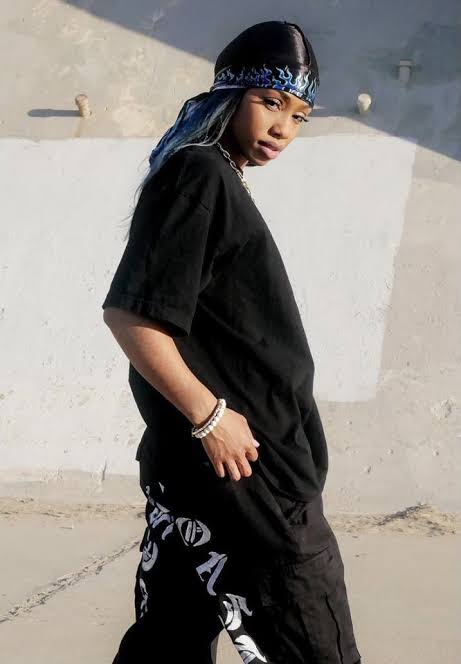
Do-rags vs. Headbands: The Best Way to Keep Your Hair Back While Working Out
Share
As an athlete, you know how important it is to stay focused and comfortable during your workouts. One distraction that can throw off your game is hair getting in your face. Whether you're a runner, basketball player, or fitness enthusiast, keeping your hair back is crucial for optimal performance. Two popular solutions for this problem are do-rags and headbands. But which one is the best choice for athletes? In this post, we'll compare the practicality of do-rags and headbands, exploring their benefits, drawbacks, and suitability for different sports and activities.
Do-rags: The Classic Choice
Do-rags have been a staple in the athletic world for decades. These cloth wraps fit snugly around your head, keeping your hair back and out of your face. Do-rags are particularly popular among athletes with longer hair, as they provide a secure and comfortable way to keep locks at bay.
Pros:
- Effective hair control: Do-rags are excellent at keeping hair back, even during high-intensity activities.
- Customizable: Do-rags come in various sizes, materials, and colors, allowing you to choose the perfect fit and style for your needs.
- Affordable: Do-rags are generally inexpensive, making them a budget-friendly option for athletes.
Cons:
- Sweat accumulation: Do-rags can trap sweat, leading to discomfort and potential skin irritation.
- Limited breathability: Some do-rags can be too tight or made from materials that don't breathe well, causing overheating.
Headbands: A Modern Alternative
Headbands have gained popularity in recent years, especially among runners and fitness enthusiasts. These flexible bands fit around your forehead, keeping sweat and hair out of your eyes.
Pros:
- Breathability: Headbands are designed to be breathable, allowing for airflow and moisture-wicking properties.
- Sweat management: Headbands are excellent at absorbing sweat, keeping your face and eyes dry.
- Versatility: Headbands come in various widths, materials, and styles, making them suitable for different sports and activities.
Cons:
- Less effective for long hair: Headbands may not be as effective at keeping longer hair back, especially during high-intensity activities.
- Slippage: Headbands can slip or move during exercise, requiring adjustments.
Comparison and Recommendations
So, which is the best choice for athletes: do-rags or headbands? The answer depends on your specific needs and preferences.
- Do-rags: Ideal for athletes with longer hair, do-rags provide a secure and comfortable way to keep hair back. They're suitable for sports like basketball, football, and hockey.
- Headbands: Perfect for athletes with shorter hair, headbands offer a breathable and sweat-managing solution. They're ideal for runners, cyclists, and fitness enthusiasts.
Ultimate Tip: Consider a hybrid solution that combines the benefits of both do-rags and headbands. Look for products that feature breathable materials, moisture-wicking properties, and adjustable fits.
Conclusion
When it comes to keeping your hair back during workouts, both do-rags and headbands have their advantages and disadvantages. By understanding the benefits and drawbacks of each, you can make an informed decision that suits your athletic needs. Whether you choose a classic do-rag or a modern headband, remember to prioritize comfort, breathability, and effectiveness. Stay focused, stay comfortable, and take your workouts to the next level!
Do-rags: The Classic Choice
Do-rags have been a staple in the athletic world for decades. These cloth wraps fit snugly around your head, keeping your hair back and out of your face. Do-rags are particularly popular among athletes with longer hair, as they provide a secure and comfortable way to keep locks at bay.
Pros:
- Effective hair control: Do-rags are excellent at keeping hair back, even during high-intensity activities.
- Customizable: Do-rags come in various sizes, materials, and colors, allowing you to choose the perfect fit and style for your needs.
- Affordable: Do-rags are generally inexpensive, making them a budget-friendly option for athletes.
Cons:
- Sweat accumulation: Do-rags can trap sweat, leading to discomfort and potential skin irritation.
- Limited breathability: Some do-rags can be too tight or made from materials that don't breathe well, causing overheating.
Headbands: A Modern Alternative
Headbands have gained popularity in recent years, especially among runners and fitness enthusiasts. These flexible bands fit around your forehead, keeping sweat and hair out of your eyes.
Pros:
- Breathability: Headbands are designed to be breathable, allowing for airflow and moisture-wicking properties.
- Sweat management: Headbands are excellent at absorbing sweat, keeping your face and eyes dry.
- Versatility: Headbands come in various widths, materials, and styles, making them suitable for different sports and activities.
Cons:
- Less effective for long hair: Headbands may not be as effective at keeping longer hair back, especially during high-intensity activities.
- Slippage: Headbands can slip or move during exercise, requiring adjustments.
Comparison and Recommendations
So, which is the best choice for athletes: do-rags or headbands? The answer depends on your specific needs and preferences.
- Do-rags: Ideal for athletes with longer hair, do-rags provide a secure and comfortable way to keep hair back. They're suitable for sports like basketball, football, and hockey.
- Headbands: Perfect for athletes with shorter hair, headbands offer a breathable and sweat-managing solution. They're ideal for runners, cyclists, and fitness enthusiasts.
Ultimate Tip: Consider a hybrid solution that combines the benefits of both do-rags and headbands. Look for products that feature breathable materials, moisture-wicking properties, and adjustable fits.
Conclusion
When it comes to keeping your hair back during workouts, both do-rags and headbands have their advantages and disadvantages. By understanding the benefits and drawbacks of each, you can make an informed decision that suits your athletic needs. Whether you choose a classic do-rag or a modern headband, remember to prioritize comfort, breathability, and effectiveness. Stay focused, stay comfortable, and take your workouts to the next level!